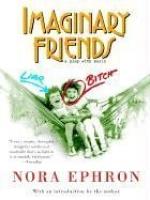|
This section contains 231 words (approx. 1 page at 400 words per page) |

|
Past and Present
Ephron constantly juxtaposes present, when Hellman and McCarthy are reviewing their lives in Hell, with past, which focuses on the two women's memories. This structure helps illustrate and reinforce Ephron's focus on the tension between truth and fiction. As each character remembers details of her past, the other inevitably joins in, exclaiming, "that never happened," which is usually confirmed by both. An example of this occurs when Hellman is discussing Julia's story, which was made into a film, and which she claims was based on her own life. When Jane Fonda as Hellman in Julia throws her typewriter out of the window, Hellman admits that it never happened. In other scenes, Ephron has each woman editing and staging the other's memories.
Music
Ephron places songs between scenes to enhance and comment on the action of the play. Sometimes she has an ensemble, used as a traditional...
|
This section contains 231 words (approx. 1 page at 400 words per page) |

|




